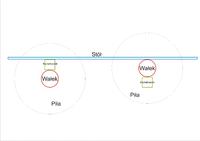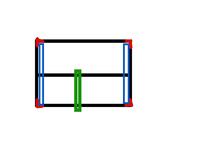Hi, I am in the process of completing the materials and construction of the 230st district, I bought a steel shaft (profile 40x40x2) (40x20x2)> I have a problem with the shaft mounting, can not be mounted from the bottom (the opposite as per the photo) and whether the top can not lie on the profiles, what is going on with these protruding profiles what looks at different constructions is a roller from the top and the top rests only on 4 legs, it would not be more stable than it would lie on the structure and the roller on the bottom?







